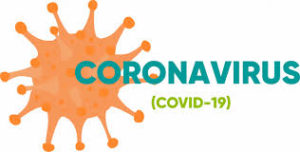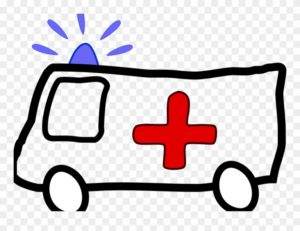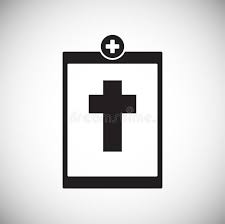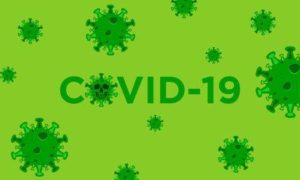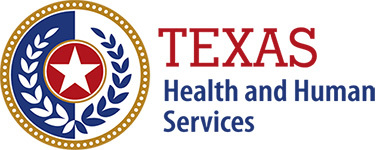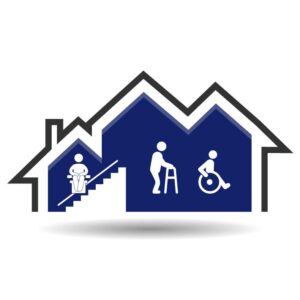COVID-19 FAQ’s Updated For HCS/TxHmL
HHSC has revised the Updated HCS and TxHmL COVID-19 FAQ (PDF) in response to the revised HCS and TxHmL COVID-19 Mitigation and Visitation rules.
September 21st,2021
COVID-19 Response Plan Revised HCS/TxHmL
COVID-19 Response Plan (PDF) in response to the revised HCS and TxHmL COVID-19 Mitigation and Visitation rules
9/21/21
Updated to reflect changes in response to GA-38 regarding facemasks and updated CDC guidance
The Table of Contents on pages 4 and 5 of the Response Plan will tell you what changes were made, each time the plan was revised, and the date.
February 22nd, 2021
COVID-19 FAQ’s From HHSC for HCS/TxHML
https://hhs.texas.gov/sites/default/files/documents/doing-business-with-hhs/provider-portal/long-term-care/hcs-txhml-general-covid-faq.pdf
January 7th, 2021
Texas Medicaid CHIP COVID-19 Information
Future meeting notices and information will continue to be shared on these sites, so please check back regularly.
December 2, 2020
Reminder: Requirements and Protocol for COVID-19 Emergency Staffing Requests
HHSC LTCR offers emergency staff for facilities facing severe critical shortages. Emergency staffing is only approved for facilities that can’t provide necessary care to residents due to staffing shortages. Emergency staffing is temporary while facilities get alternative staffing resources.
Facilities must have staffing contingency plans in place to address potential staffing shortages due to COVID-19. (42 CFR §483.73(b)(6)).
Facilities are required to have separate staff assigned to each COVID-19 cohort and not share staff between cohorts unless necessary to maintain adequate staffing (40 TAC §19.2802(i)).
Facilities may only request emergency staffing from HHSC if all the following contingency strategies have been exhausted.
- Share staff between unknown COVID-19 status and positive COVID-19 cohorts (see CDC guidance).
- Contact staffing agencies, nearby health care facilities, partners, or local colleges or health care centers to identify supplemental staff. (40 TAC §19.2802(j))
- Identify alternate facilities with adequate staffing to care for residents with COVID-19.
- Note: Nursing facilities must contact their LTCR Regional Director and local health department before using staff who are asymptomatic and have, or may have, COVID-19. This is generally only allowed in emergencies. Implement or attempt all other staffing contingency strategies listed above before this step.
If a facility has implemented or attempted each item listed above and still does not have adequate staff to meet critical staffing levels, the facility must contact the Regional Director for their LTCR Region to request emergency staffing.
If approved for emergency staffing, facilities must submit a transition plan for addressing shortages that includes the following.
- Forecasted timeline for when COVID-19 positive staff will return to work, using the CDC’s Return to Work criteria, and when emergency staff can be released.
- Acquiring temporary staff or recruiting new hires.
- All other strategies for ensuring critical staffing shortages are fulfilled as soon as possible.
December 2, 2020
Risk/Benefit Return to Activity Form (Free from our friends at HRS)
This could be very helpful for considerations for returning to work, Day Hab, Volunteer Jobs, etc…
https://hrstonline.com/download/risk-benefit-return-to-activity-form/?wpdmdl=3104&refresh=5fc779cf9f80e1606908367
Reminder to LTC Facilities about Death Reporting Requirements
July 22, 2020
The following are HHSC’s requirements for care facilities to report residents/individuals’ deaths to HHSC, including deaths from COVID-19.
- Intermediate care facilities must report all deaths to Complaint and Incident Intake within one hour. See:
- Home and Community-based Services and Texas Home Living Program Providers must report all deaths of people receiving HCS or TxHmL services to HHSC by the end of the next business day following the death or the program provider’s learning of the death. See IL 12-28.
***Note: If the death may have been from abuse, neglect or exploitation, more reporting requirements may exist.
LTC Providers Required to Report COVID-19 to HHSC
Effective immediately, a provider must report every confirmed case (only confirmed cases) of COVID-19 in staff and individuals receiving services from the provider as a self-reported incident. A presumptive or confirmed case is considered a critical incident.
Providers (other than HCS and TxHmL providers) must notify HHSC through TULIP or by calling Complaint and Incident Intake (CII) at 1-800-458-9858.
HCS and TxHmL providers must notify HHSC at waiversurvey.certification@hhsc.state.tx.us
List of Local Health Authorities for COVID-19 from DSHS
https://www.dshs.texas.gov/regions/Coronavirus-(2019-nCoV)-Local-Health-Entities/
See Link below to handout on the role of the Local Health Authorities
https://www.dshs.state.tx.us/region1/documents/tmp-LocalHealthAuthority.pdf
For FAQ’s For Covid-19
Contact Information For Questions:
- 512-438.5359
schmidt@hhsc.tx.us.state
Policy Specialist for HCS/TxHmL- hcspolicy@hhsc.state.tx.us
Where do HCS and TxHmL program providers go for COVID-19 information?
Answer: Reliable sources of information include:
- The Centers for Disease Control and Prevention
- The Texas Department of State Health Services
- The Health and Human Services Commission
Who do I call if staff or individual tests positive for COVID-19?
Answer: Contact the local health department, or the Department of State Health Services (DSHS) if there is no local health department. Additionally, program providers must also report this information to HHSC at:waiversurvey.certification@hhsc.state.tx.us
Guidance for LTCR Providers on Coronavirus
LTCR urges all providers to review the Centers for Disease Control’s new guidance on strategies to prevent the spread of COVID-19 in long-term care facilities. To ensure you have the most current information on COVID-19, visit the CDC and DSHS websites. For questions or guidance, call one of the DSHS hotlines:
- 888-963-7111
- 877-570-9779
All providers must continue to follow all laws, regulations, guidance and their own internal policies and procedures related to infection control.
From The CDC website:
Key Strategies to Prepare for COVID-19 in Long-term Care Facilities (LTCFs)
COVID-19 cases have been reported in all 50 states, the District of Columbia, and multiple U.S. territories; many having wide-spread community transmission. Given the high risk of spread once COVID-19 enters a LTCF, facilities must act immediately to protect residents, families, and staff from serious illness, complications, and death.
- Keep COVID-19 from entering your facility:
- Restrict all visitors except for compassionate care situations (e.g., end-of- life).
- Restrict all volunteers and non-essential healthcare personnel (HCP), including consultant services (e.g., barber, hairdresser).
- Implement universal use of source control for everyone in the facility.
- Actively screen anyone entering the building (HCP, ancillary staff, vendors, consultants) for fever and symptoms of COVID-19 before starting each shift; send ill personnel home. Sick leave policies should be flexible and non-punitive.
- Cancel all field trips outside of the facility.
- Identify infections early:
- Actively screen all residents daily for fever and symptoms of COVID-19; if symptomatic, immediately isolate and implement appropriate Transmission-Based Precautions.
- Older adults with COVID-19 may not show typical symptoms such as fever or respiratory symptoms. Atypical symptoms may include new or worsening malaise, new dizziness, or diarrhea. Identification of these symptoms should prompt isolation and further evaluation for COVID-19.
- Notify your state or local health department immediately (<24 hours) if these occur:
- Severe respiratory infection causing hospitalization or sudden death
- Clusters (≥3 residents and/or HCP) of respiratory infection
- Individuals with suspected or confirmed COVID-19
- Actively screen all residents daily for fever and symptoms of COVID-19; if symptomatic, immediately isolate and implement appropriate Transmission-Based Precautions.
- Prevent spread of COVID-19:
- Actions to take now:
- Cancel all group activities and communal dining.
- Enforce social distancing among residents.
- Ensure all residents wear a cloth face covering for source control whenever they leave their room or are around others, including whenever they leave the facility for essential medical appointments.
- Ensure all HCP wear a facemask or cloth face covering for source control while in the facility. Cloth face coverings are not considered personal protective equipment (PPE) because their capability to protect healthcare personnel (HCP) is unknown. Cloth face coverings should NOT be worn instead of a respirator or facemask if more than source control is required.
- If COVID-19 is identified in the facility, restrict all residents to their rooms and have HCP wear all recommended PPE for care of all residents (regardless of symptoms) on the affected unit (or facility-wide depending on the situation). This includes: an N95 or higher-level respirator (or facemask if a respirator is not available), eye protection, gloves, and gown. HCP should be trained on PPE use including putting it on and taking it off.
- This approach is recommended because of the high risk of unrecognized infection among residents. Recent experience suggests that a substantial proportion of residents could have COVID-19 without reporting symptoms or before symptoms develop.
- When a case is identified, public health can help inform decisions about testing asymptomatic residents on the unit or in the facility.
- Actions to take now:
- Assess supply of personal protective equipment (PPE) and initiate measures to optimize current supply:
- If you anticipate or are experiencing PPE shortages, reach out to your state/local health department who can engage your local healthcare coalition.
- Consider extended use of respirators, facemasks, and eye protection or prioritization of gowns for certain resident care activities.
- Identify and manage severe illness:
- Designate a location to care for residents with suspected or confirmed COVID-19, separate from other residents.
- Monitor ill residents (including documentation of temperature and oxygen saturation) at least 3 times daily to quickly identify residents who require transfer to a higher level of care.

